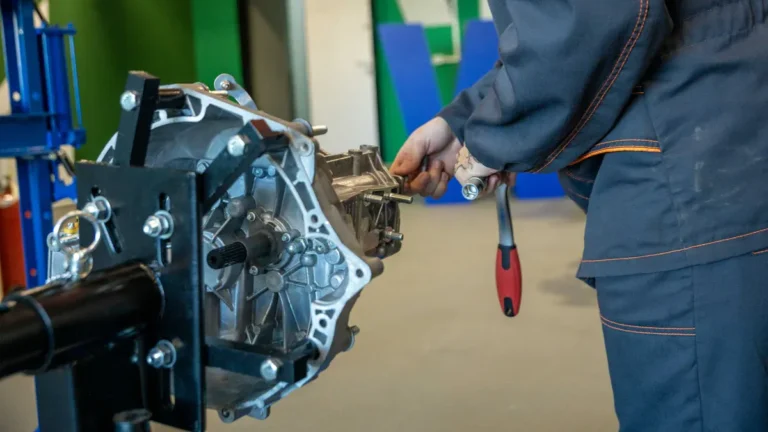Leaving a hybrid car in prolonged heat can speed up chemical wear inside the battery, making it lose power faster and reducing how well the car uses electric driving and regenerative braking. Hot temperatures cause battery cells to degrade and can evaporate vital electrolytes, which means the battery holds less charge and forces the gas engine to work harder.
Drivers may notice more frequent battery fan use, dashboard warnings, or unusual noises as signs of trouble. These problems are worse in hot, humid climates or places like Texas, where the heat rarely lets up, placing extra stress on the battery’s lifespan and efficiency. Cooling systems help but often run nonstop, so parking in shade or well-ventilated garages is key to easing the battery’s burden and avoiding costly replacements that can reach several thousand dollars. This link between heat and battery damage makes it advisable to watch for initial signs and keep an eye on battery health to avoid unexpected breakdowns or declines in fuel economy.
How Heat Damages Hybrid Battery Chemistry
As the sun beats down and temperatures climb, the chemistry inside a hybrid car’s battery starts to change in ways that can hurt its performance.
High heat speeds up chemical reactions inside the battery, causing electrode oxidation, which means the metal parts inside react with oxygen and start to wear out faster.
At the same time, electrolyte decomposition can happen, breaking down the liquid that helps move electricity between parts of the battery, making it harder for the battery to hold and deliver power.
This breakdown leads to the gradual loss of battery capacity, so over time, the battery cannot store as much energy as it once could.
As cells inside weaken, the battery’s aggregate strength drops, and the car could start to rely more on its gasoline engine, which hurts fuel efficiency and electric driving range.
Since these changes happen at a chemical level, they are often silent initially, but symptoms like reduced range, slower charging, and warning lights can appear as damage builds.
For owners, this means being extra watchful in hot weather, because while the effects possibly do not show up right away, the latent damage can add up, making prompt identification and gentle care key to keeping the hybrid battery healthy.
Effects of Heat on Hybrid Battery Performance
Heat substantially reduces hybrid battery performance through causing chemical reactions that degrade the battery cells faster and lower their ability to hold charge. As temperatures rise, the battery’s power delivery weakens, making it harder for the vehicle to rely on electric energy.
This forces the gasoline engine to work more, which lowers fuel efficiency and increases wear. Drivers might notice less electric range, especially on short trips, and the car’s software calibration can struggle to manage battery output smoothly.
Warning lights or error codes often appear, signaling battery stress. The cooling fan could run constantly, trying to protect the system.
Over time, these effects add up, making the car less efficient and more costly to run.
Recognizing Signs of Heat Damage in Hybrid Batteries
Hybrid batteries under heat stress often display clear warning indicators that signal damage.
Drivers might notice persistent dashboard alerts related to battery condition or electric system faults, which indicate the battery is struggling to function properly.
At the same time, a reduced electric driving range becomes apparent as the battery loses its ability to hold a full charge, especially on short trips or in stop-and-go driving situations.
Warning Indicators
When hybrid batteries endure excessive heat, warning signs begin to appear long before total failure occurs.
The alert hierarchy within the vehicle’s monitoring system escalates as sensor calibration detects rising battery temperatures and declining performance. This can trigger dashboard warnings about battery condition or electric system faults, alerting the driver sooner.
Frequent activation of the battery cooling fan signals heat stress, as it runs longer to manage rising internal temperatures.
Drivers might also notice a sudden drop in electric-only driving range or unusual noises from the battery compartment caused by thermal expansion and stressed battery modules.
Increased fuel consumption follows as the gasoline engine compensates for reduced battery output.
These progressive symptoms indicate the battery’s deteriorating state under heat exposure, emphasizing the need for timely attention before irreversible damage occurs.
Reduced Electric Range
Following the initial warning signs of battery stress, another common symptom is a noticeable drop in the electric driving range. Excessive heat accelerates the aging of hybrid battery cells, reducing their capacity to store and deliver power during use.
This decline affects trip planning since drivers must rely more on the gasoline engine earlier in routes, especially on short trips where electric driving is most beneficial. Reduced battery efficiency also impairs regenerative braking, lessening the battery’s ability to recover energy during deceleration and further decreasing electric range.
Drivers might feel their hybrid vehicle depends increasingly on gas power, causing a drop in fuel economy and general efficiency. Awareness of this reduced range helps users adjust expectations and manage their driving habits to delay further heat-related battery damage.
Geographic Factors That Increase Battery Stress
Regions with consistently high temperatures, such as Texas and Florida, subject hybrid batteries to continuous heat stress that speeds up chemical aging and reduces total battery life.
This constant exposure causes batteries to lose charge capacity faster, leading to noticeable drops in electric driving range and more frequent activation of battery cooling systems.
Drivers in these hot climates often face the need for earlier battery replacements and increased maintenance to keep their hybrids running efficiently.
Heat Impact by Region
What role does geography play in the heat stress experienced in hybrid car batteries? Geographic location strongly influences battery health, as regions with persistent high temperatures accelerate battery degradation.
This increased degradation demands focused infrastructure resilience and thoughtful policy incentives to support vehicle longevity.
For example:
- Hot states like Texas and Florida expose batteries to nearly year-round heat, speeding chemical breakdown and reducing capacity.
- Continuous heat causes more frequent cooling fan use, signaling stress and raising maintenance needs in such climates.
- Extreme regional heat events amplify performance loss, often triggering battery warning indicators and increased fuel use.
Owners in these areas often face earlier hybrid battery replacements and higher repair costs, highlighting the need for proactive monitoring and climate-tailored management strategies. This regional heat impact tightly connects to infrastructure and policy efforts, vital for sustaining hybrid vehicle efficiency over time.
Climate-Driven Battery Stress
Geographic factors shape the level of heat stress experienced in hybrid car batteries through exposing them to varying and often extreme temperature conditions.
Areas with high humidity not only intensify heat retention around the battery but also encourage corrosion of internal components, which weakens battery integrity and speeds up deterioration.
Similarly, salt exposure, common in coastal regions, adds another layer of risk through accelerating electrolyte breakdown and damaging connectors.
These combined stresses cause hybrid batteries to lose capacity faster and lower their efficiency, especially if heat waves persist.
Drivers in such climates often notice reduced electric driving range and more frequent battery cooling fan activity.
This ongoing strain makes vigilant battery monitoring and proactive maintenance essential, as neglect can lead to costly repairs or premature battery replacement.
The interplay of humidity and salt exposure with temperature extremes thereby critically influences hybrid battery longevity.
Economic Impact of Heat-Related Battery Failure
The financial burden of heat-related hybrid battery failure can be significant for vehicle owners. Excessive heat accelerates chemical degradation, leading to reduced battery capacity and efficiency, which ultimately lowers resale value and could affect insurance claims due to unexpected repairs.
These issues create added costs and inconvenience, making prompt identification essential. Key economic impacts include:
- High Replacement Costs: Hybrid battery replacements range from $1,000 to $5,000 and often become necessary sooner in hot climates.
- Resale Depreciation: Heat-damaged batteries reduce the vehicle’s market value as buyers anticipate costly repairs.
- Insurance Implications: Claims related to battery failure could raise premiums or complicate coverage.
Regular diagnostic checks and maintaining cooling systems help avoid such costly surprises through preserving battery health and extending lifespan in heat-stressed environments.
Preventing Heat Damage: Maintenance and Best Practices
Coping with the financial hit from a heat-damaged hybrid battery can leave anyone feeling frustrated, but there are practical steps to help protect the battery and avoid those costly surprises.
Prioritizing parking in shaded or well-ventilated garages reduces direct heat buildup. Proper garage ventilation not only cools the car but limits battery stress during stagnant heat periods.
Keeping the battery cooling fan fully functional is essential, as it actively regulates internal temperatures during operation. Software optimization can also help through adjusting battery usage to reduce heat generation under extreme conditions.
Regular diagnostic inspections detect initial signs of heat damage and verify fans and thermal controls operate properly. Combining these strategies with routine maintenance improves battery longevity while easing worries about heat’s toll on hybrid performance and repair costs.



